By Renske van Enschot
In our master course Interactive Storytelling, students create their own non-fiction interactive digital narratives. In these interactive narratives, readers become interactors who can engage with the characters, choose which storyline to follow, which perspectives to explore, et cetera. The design of the interactive narratives is justified by theories about the experience and effects of (interactive) narratives. In the ’20-’21 edition of the course, the theme for all interactive digital narratives was diversity and inclusion (see our previous blogpost on this theme). The students came up with impressive interactive narratives on a diverse range of subtopics, from inequality on the work floor to the prejudices towards the LGBTQ community. We proudly showcase some of the narratives below.
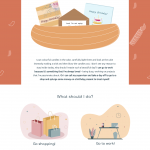 Aged lets you explore the challenges that elderly people face at work or in everyday situations.
Aged lets you explore the challenges that elderly people face at work or in everyday situations.
 On the same subtopic, Meet May lets you step into the shoes of May, a 71 y/o grandmother who is confronted and struggles with innovative technology.
On the same subtopic, Meet May lets you step into the shoes of May, a 71 y/o grandmother who is confronted and struggles with innovative technology.
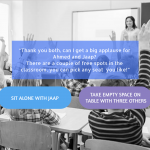 Is this your friend? is about an elementary school friendship between cultures. Interactors learn how different cultures experience and cope with diversification, and get to decide how the story ends.
Is this your friend? is about an elementary school friendship between cultures. Interactors learn how different cultures experience and cope with diversification, and get to decide how the story ends.
 Town is about implicit biases concerning gender, sexuality, disabilities, ethnicity, and visual appearance. The interactor is invited to explore different stories and reflect on his/her own biases.
Town is about implicit biases concerning gender, sexuality, disabilities, ethnicity, and visual appearance. The interactor is invited to explore different stories and reflect on his/her own biases.
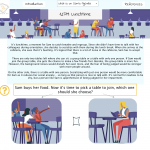 In Listen up, you get to experience what it is like to have a hearing impairment on the work floor. Learn what it takes to feel included at work as a young hearing-impaired person.
In Listen up, you get to experience what it is like to have a hearing impairment on the work floor. Learn what it takes to feel included at work as a young hearing-impaired person.
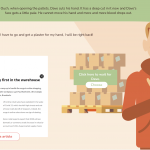 Hop on a job lets children aged 11-14 yo experience different occupations. This interactive narrative hopes to reduce prejudices towards low status occupations and create awareness of the required skills and necessity of these jobs.
Hop on a job lets children aged 11-14 yo experience different occupations. This interactive narrative hopes to reduce prejudices towards low status occupations and create awareness of the required skills and necessity of these jobs.
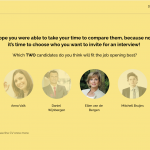 In We regret to inform you, you become a recruiter and discover which choices recruiters have to make, which prejudices they may have and how this affects the applicants who want to secure their place in the labour market.
In We regret to inform you, you become a recruiter and discover which choices recruiters have to make, which prejudices they may have and how this affects the applicants who want to secure their place in the labour market.
And do have a look at these interactive narratives as well:
- Adoption: Dutch on the inside – Asian from the outside
- Autism: But you don’t look autistic at all
- Down syndrome: My special friend Hannah
- Dutch children’s holiday Saint Nicholas: Who’s walking on my roof?
- Gender discrimination in the workplace: Hard work pays off
- Hearing impairment: Unheard
- LGBTQ: Being allowed to love whoever you want
- LGBTQ: Class Dandelion
- LGBTQ: Sexual Diversity
- Rwandan genocide survivors: Bèkske – Rwanda Empowerment Coffee